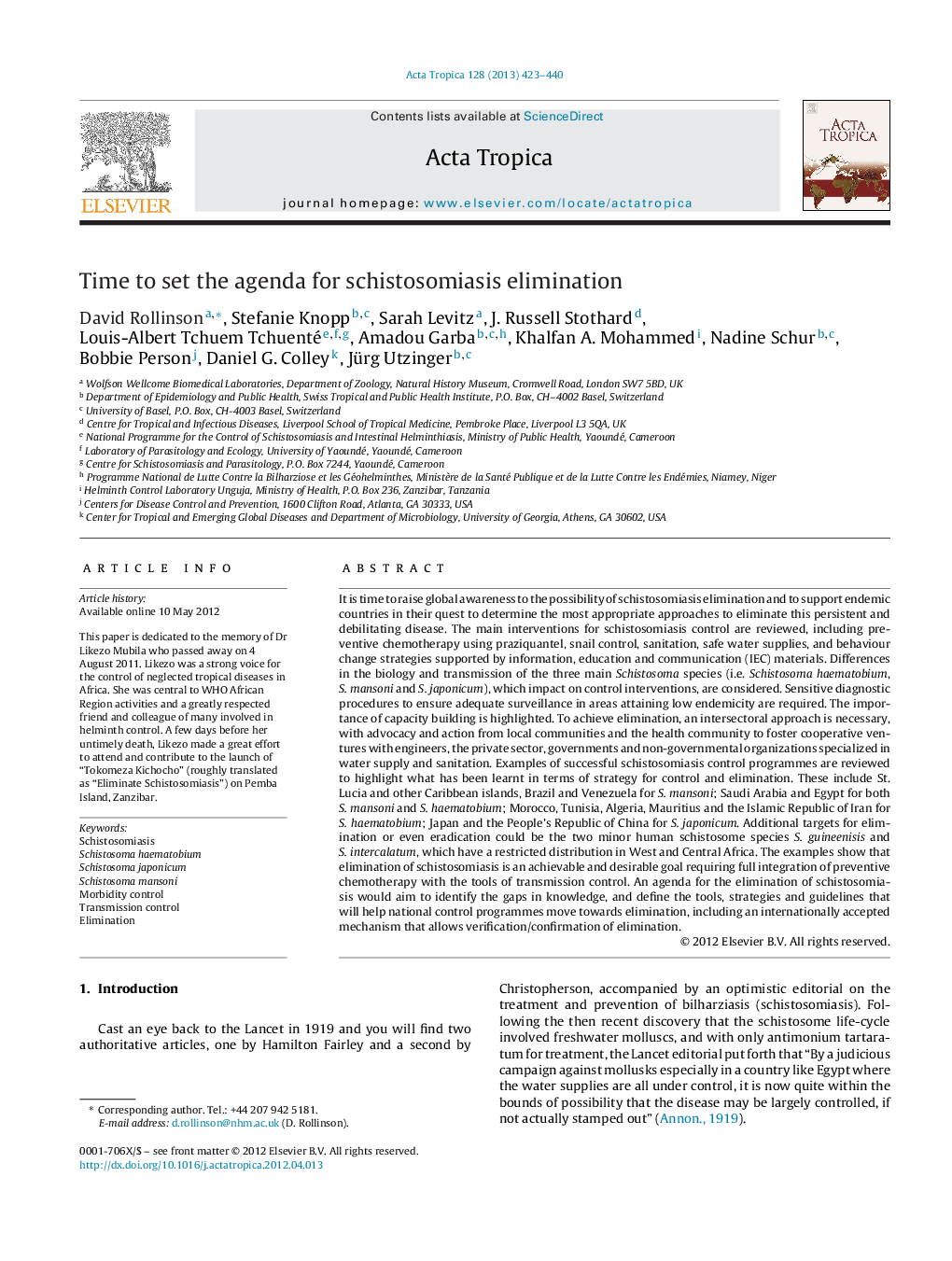| Article ID | Journal | Published Year | Pages | File Type |
|---|---|---|---|---|
| 3393888 | Acta Tropica | 2013 | 18 Pages |
▶ Elimination of schistosomiasis is an achievable and desirable goal. ▶ We present tools, strategies and guidelines of a schistosomiasis elimination agenda. ▶ Preventive chemotherapy must be complemented by transmission control. ▶ Political will and commitment and intersectoral collaboration are essential features. ▶ An internationally accepted mechanism of confirmation of elimination is required.
It is time to raise global awareness to the possibility of schistosomiasis elimination and to support endemic countries in their quest to determine the most appropriate approaches to eliminate this persistent and debilitating disease. The main interventions for schistosomiasis control are reviewed, including preventive chemotherapy using praziquantel, snail control, sanitation, safe water supplies, and behaviour change strategies supported by information, education and communication (IEC) materials. Differences in the biology and transmission of the three main Schistosoma species (i.e. Schistosoma haematobium, S. mansoni and S. japonicum), which impact on control interventions, are considered. Sensitive diagnostic procedures to ensure adequate surveillance in areas attaining low endemicity are required. The importance of capacity building is highlighted. To achieve elimination, an intersectoral approach is necessary, with advocacy and action from local communities and the health community to foster cooperative ventures with engineers, the private sector, governments and non-governmental organizations specialized in water supply and sanitation. Examples of successful schistosomiasis control programmes are reviewed to highlight what has been learnt in terms of strategy for control and elimination. These include St. Lucia and other Caribbean islands, Brazil and Venezuela for S. mansoni; Saudi Arabia and Egypt for both S. mansoni and S. haematobium; Morocco, Tunisia, Algeria, Mauritius and the Islamic Republic of Iran for S. haematobium; Japan and the People's Republic of China for S. japonicum. Additional targets for elimination or even eradication could be the two minor human schistosome species S. guineenisis and S. intercalatum, which have a restricted distribution in West and Central Africa. The examples show that elimination of schistosomiasis is an achievable and desirable goal requiring full integration of preventive chemotherapy with the tools of transmission control. An agenda for the elimination of schistosomiasis would aim to identify the gaps in knowledge, and define the tools, strategies and guidelines that will help national control programmes move towards elimination, including an internationally accepted mechanism that allows verification/confirmation of elimination.
Graphical abstractWe present an agenda for schistosomiasis elimination that defines tools, strategies and guidelines and highlights current knowledge gaps. Our agenda is motivated by past successful control and elimination efforts and should assist national control programmes to move progressively from morbidity control towards elimination.Figure optionsDownload full-size imageDownload as PowerPoint slide
